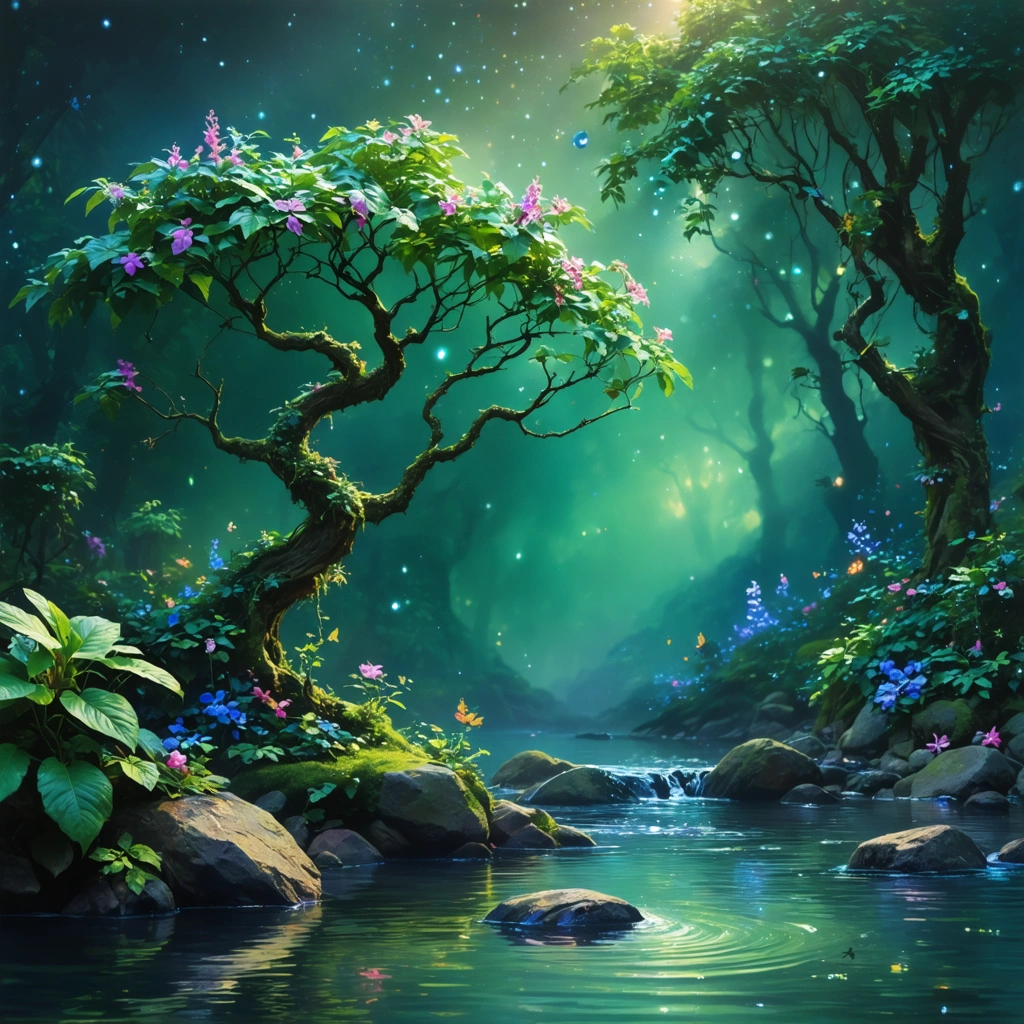
An Enchanting Introduction to Nature’s Mystical Wonders
Our world unfolds with mystery and magic every day, and nature often surprises us with its hidden treasures. In this comprehensive narrative, we take an inspiring journey into the realm of magical plants that grace the Earth with their mystical properties. Furthermore, these botanical marvels not only capture our imagination but also offer diverse benefits. Throughout this article, we explore ten outstanding magical plants. We emphasize their unique qualities while connecting ancient traditions with modern discoveries. Consequently, this narrative embraces both myth and science, inviting you to experience nature’s art in a whole new light.
The Botanical Heroes: A Detailed Exploration
1. Shame Plant – Mimosa pudica
Originating in India, America, and Australia, this plant instantly mesmerizes onlookers with its reactive properties. Upon the slightest touch, the shame plant delicately folds its leaves, making it seem as if it is blushing under scrutiny. Moreover, botanists and herbalists value it for its medicinal virtues. Many communities harness its potential as an antidepressant, anti-fertility, and antibacterial agent. Notably, indigenous cultures have passed down secrets about its use for healing purposes through generations.
To summarize its advantages, consider the following list:
- Sensory response to touch
- Therapeutic herbal remedies
- Cultural significance across continents
Additionally, scientific research now delves into its active compounds, which could expand its role in modern medicine.
2. Living Stone – Lithops
These curious succulents, native to South Africa and Namibia, have earned the nickname “living stone” due to their incredible camouflage. They mimic the texture and color of nearby rocks, allowing them to blend into arid landscapes flawlessly. Therefore, the living stone plant thrives in harsh environments where other plants struggle to survive.
Interestingly, these plants exhibit unique survival mechanisms. They have evolved over centuries, adapting to extreme sunlight and minimal water. Among their traits, one stands out: an almost invisible root system. This phenomenon fascinates botanists who admire how life prevails even in the most challenging settings.
Furthermore, many enthusiasts respect living stones for their rarity and delicate beauty. Whether one appreciates them as ornamental pieces or studies their evolutionary tactics, these plants radiate a subtle magic in every facet of their existence.
3. Dragon’s-Blood Tree – Dracaena cinnabari
Emerging from the Socotra archipelago, the dragon’s-blood tree stands as one of nature’s oldest and most mysterious wonders. Its striking umbrella-like canopy notably produces a rich red sap that captivates the imagination. Historically, this tree enchanted civilizations because its sap proved exceedingly versatile.
Historically, ancient artisans extracted this crimson resin for multiple purposes. For example, creative craftspeople employed it as pottery glue and natural dye, and musicians even valued it for varnishing violins. In addition, the use of dragon’s-blood in breath fresheners and lipstick underlines its cultural and practical significance. Such diversity in applications encourages both modern chemists and historians to delve deeper into its legacy.
4. Strangler Fig – Ficus altissima
Originating from the West Indies and Florida, the strangler fig exhibits a paradoxical blend of beauty and aggression. Although it may appear as a mysterious “killer tree,” its method of growth demonstrates extraordinary strength. The tree’s long, snake-like roots entwine around host trees, establishing themselves rapidly while absorbing vital nutrients.
Equally notable is its resilience; these plants withstand cyclones with remarkable sturdiness. An informative table below outlines its unique attributes:
| Characteristic | Description |
|---|---|
| Growth Pattern | Aggressive vine-like roots that envelope the host |
| Resilience | Withstands severe weather conditions |
| Ecological Role | Reduces competition by absorbing nutrients |
Through these features, the strangler fig not only adapts to its environment but also plays a pivotal role in shaping forest ecosystems. For that reason, researchers remain intrigued by its growth dynamics.
5. Deadly Nightshade – Atropa belladonna
This infamous plant, which traces its origins to Western Asia, North Africa, and Europe, provokes both fascination and caution. Deadly nightshade earned its notorious reputation due to its highly potent alkaloids. Historically, people employed its extract as a poison for arrow tips. Nevertheless, its toxic nature contrasts sharply with its valuable medicinal uses.
Interestingly, ancient physicians concocted sedatives such as the “twilight sleep” anesthetic method during childbirth using its derivatives. It is worth noting that despite its dangerous properties, deadlier nightshade shares a botanical lineage with everyday vegetables like tomatoes and eggplants. In summary, this plant illuminates the fine line between nature’s danger and utility.
6. Yarrow – Achillea millefolium
Native to temperate regions of Asia, Europe, and North America, yarrow frequently earns the moniker “healer’s healer.” This plant, celebrated for its calming properties, plays a significant role in traditional medicine. Moreover, its easy accessibility makes it a popular choice among herbalists.
Yarrow proudly displays multiple virtues. For instance, communities use it to stem blood flow in both minor and deep wounds. Simultaneously, legends recount how the Navajo chewed yarrow leaves to alleviate toothaches. Consequently, this humble plant continues to spark interest because of its wide-ranging healing potentials.
7. Venus Flytrap – Dionaea muscipula
Originating in the subtropical wetlands of the United States’ East Coast, the Venus flytrap stands out with a voracious appetite for insects. With a leaf structure adapted to trap unsuspecting prey, this carnivorous plant enters an enchanted realm of survival and adaptation.
Remarkably, the Venus flytrap operates with sensitivity akin to the shame plant. When an insect touches its trigger hairs, the trap snaps shut rapidly. Additionally, many cultures believe that the graceful mechanism of the Venus flytrap attracts prosperity and growth. Hence, enthusiasts and gardeners value this plant not only for its biological role but also for its potential symbolic meanings in ornamentation and folklore.
8. Rainbow Eucalyptus – Eucalyptus deglupta
This stunning plant spans the regions of the Philippines, Indonesia, and Papua New Guinea. The rainbow eucalyptus draws attention with its vibrant, multicolored bark that appears as if painted by an artist’s brush. Equally important, its aromatic scent enhances any natural setting, making a striking impression on all who encounter it.
Beyond its visual appeal, the rainbow eucalyptus harbors therapeutic properties. The sap extracted from its bark finds application in easing respiratory ailments like coughs and bronchitis. Furthermore, the tree’s imposing height makes it a landmark in tropical forests. In brief, the rainbow eucalyptus epitomizes a blend of beauty, strength, and restorative power.
9. Bleeding Tooth Fungus – Hydnellum peckii
Although the name might evoke eerie images, the bleeding tooth fungus impresses with its gentle enigma. Found in Europe and North America, this interesting organism exudes a red, blood-like fluid from its surface. Despite its misleading moniker, many foragers and naturalists appreciate its unique place in the forest ecosystem.
The bleeding tooth fungus thrives in arid and secluded regions, acting as a subtle reminder that nature often masks its wonders behind peculiar facades. Additionally, culinary adventurers sometimes experiment with its bitter, edible exudate, though it remains more admired for its visual allure than for common taste. Ultimately, this fungus shows that even seemingly macabre organisms can contribute extraordinary beauty to the natural world.
10. Tillandsia – The Epiphytic Wonder
Rounding out our list is the resilient tillandsia, which graces the landscapes ranging from the Caribbean to mid-Argentina and beyond. Notably, this epiphytic plant thrives without soil, attaching itself to trees, rocks, and other natural structures for support. As a result, tillandsia exemplifies adaptability and strength in the harshest conditions.
Furthermore, its ability to endure arid surroundings while absorbing moisture from the air makes it a favorite among plant aficionados. Observers often note the plant’s seemingly effortless hold on life, all thanks to its robust root structure. In a numbered format, consider these striking characteristics:
- Survival without traditional soil
- Efficient water absorption through specialized leaves
- Adaptability to diverse climates
In essence, tillandsia embodies the spirit of endurance and mystique that defines magical plants. Enthusiasts and researchers alike continue to uncover new insights into its extraordinary survival strategies.
Connecting Ancient Legends with Modern Curiosity
This narrative illustrates how magical plants transcend time and geography. In many societies, these remarkable species have inspired legends, rituals, and scientific inquiries. For example, ancient healers harnessed plant powers to treat various ailments while modern researchers explore their chemical properties for breakthrough drugs. Moreover, botanical gardens and conservation projects honor these natural marvels, ensuring that future generations may study their mysteries and cultural significance.
Next, consider the following comparison table, which outlines key properties of each magical plant discussed above:
| Magical Plant | Region of Origin | Notable Characteristics | Historical or Medicinal Use |
|---|---|---|---|
| Shame Plant | India, America, Australia | Sensitive touch response | Herbal remedies, antidepressant |
| Living Stone | South Africa, Namibia | Camouflage capabilities | Survival in arid conditions |
| Dragon’s-Blood Tree | Socotra Archipelago | Red sap production | Pottery glue, dye, varnish |
| Strangler Fig | West Indies, Florida | Aggressive growth; nutrient absorption | Structural reinforcement in ecosystems |
| Deadly Nightshade | Western Asia, North Africa, Europe | Toxic alkaloids | Sedative, anesthetic uses |
| Yarrow | Temperate regions of Asia, Europe, North America | Healing properties | Bleeding control, pain relief |
| Venus Flytrap | Subtropical East Coast, USA | Carnivorous trapping mechanism | Symbol of growth and prosperity |
| Rainbow Eucalyptus | Philippines, Indonesia, Papua New Guinea | Vibrant colorful bark | Respiratory remedy |
| Bleeding Tooth Fungus | Europe, North America | Exudes blood-like fluid | Ecological uniqueness |
| Tillandsia | Caribbean to mid-Argentina | Survival without soil | Adaptability to harsh climates |
As you can see, each plant weaves a vivid tapestry of folklore and botanical science. Furthermore, these magical flora engage communities around the globe, inspiring sustainable practices and the preservation of natural heritage. In addition, the interplay of mythology and modern use affords us an appreciation for plants not only as life forms, but as historical storytellers.
An Inviting Future for Magical Botany
In conclusion, our journey through these ten magical plants reveals a world that tantalizes both the cultured historian and the curious scientist. We discovered that each plant, regardless of its seemingly extraordinary abilities, holds deep significance—be it medicinal, aesthetic, or symbolic. Consequently, ongoing research and conservation projects promise to uncover even more secrets hidden among nature’s masterpieces.
Thus, readers now gain an enriched perspective on how plants influence human culture and the environment. Moreover, every encounter with a magical plant imparts a lesson in resilience and adaptability. Ultimately, this narrative encourages further exploration in local forests, botanical gardens, and academic journals to bridge ancient traditions with future innovations. Therefore, nature’s magical wonders will continue to inspire awe and invite the inquisitive mind to learn, appreciate, and protect our planet’s living legacy.
Before we part, here is a simple checklist to begin your own exploration of magical plants:
- Visit a local botanical garden or natural reserve
- Document your findings through photography or journaling
- Engage with community experts or online forums to share experiences
- Support conservation projects that protect these fascinating species
Every step you take in understanding these plants deepens your connection with nature’s lore. In summary, the magical world of plants awaits your discovery and offers endless opportunities to revel in nature’s enigmatic artistry.
A Final Enchantment
This article demonstrates how magical plants continue to captivate not only scientists and herbalists but also every soul seeking wonder in the natural world. With traditions passed down through millennia and innovative research propelling us forward, these botanical marvels serve as perennial reminders that magic often lies just beneath the surface. As you embark on your own exploration, let curiosity be your guide, and may the enchantment of nature transform your perspective on life.






